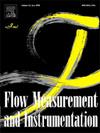基于微积分方法的转子泵效率和流量建模与验证
IF 2.7
3区 工程技术
Q2 ENGINEERING, MECHANICAL
引用次数: 0
摘要
作为变速器润滑和液压控制系统的关键部件,转子油泵对自动变速器润滑和控制的有效性起着决定性的作用,从而影响自动变速器的整体寿命。为了优化能量利用,降低系统能量损失,有必要探索影响转子泵效率的关键因素,提高转子泵的运行性能。传统的转子泵研究通常侧重于流量和输出转矩等性能指标,往往依赖于有限元模拟。然而,尽管有限元方法提供了对流动和扭矩特性的有用见解,但它们受到计算时间长和对边界条件假设高度敏感(通常是主观的)的限制。因此,在评估体积和机械效率等关键参数时,它们的准确性有限。为了克服这些限制,本研究通过对单个泵腔内容积变化的详细分析,建立了一个集总参数模型。该模型结合了泄漏区域的变形特征,在建模简洁性、计算效率和预测精度之间取得了平衡。高压区和低压区之间的泄漏区具有厚度不均匀的特点,对泵的效率影响很大,需要对其影响进行定量评价。本研究以转子泵为主要研究对象。采用集总参数法建立了考虑泄漏区变形的体积空腔模型。基于对体积变化的精确建模,分别构建了体积损失和力学损失模型。分析表明,盖板与转子之间的间隙对阻力力矩有重要影响,从而影响机械效率。通过实验测试来验证模型,结果用于检查出口流量、输入扭矩和各种效率指标的变化,包括容积、机械和总效率。实验结果验证了集总参数模型评价转子泵性能的有效性和准确性。结果表明:随着出口压力的增大,液压力与轴向预紧力趋于平衡,摩擦力矩减小,机械效率初步提高;然而,较高的温度会降低油的粘度,对容积效率产生不利影响。这些结果表明,在转子泵系统中保持有效的热管理对于提高整体效率至关重要。本文章由计算机程序翻译,如有差异,请以英文原文为准。
Modeling and verification of rotor pump efficiency and flow on calculus methods
As a critical element in transmission lubrication and hydraulic control systems, the rotor oil pump plays a decisive role in determining the effectiveness of lubrication and control in automatic transmissions, thereby influencing their overall lifespan. To optimize energy utilization and reduce system energy losses, it is essential to explore the key factors affecting the efficiency of rotor pumps and enhance their operational performance. Traditional studies on rotor pumps typically emphasize performance indicators such as flow rate and output torque, often relying on finite element simulations. However, while finite element methods provide useful insights into flow and torque characteristics, they are limited by long computational durations and high sensitivity to boundary condition assumptions, which are frequently subjective. Consequently, they offer limited accuracy in evaluating critical parameters like volumetric and mechanical efficiency. To overcome these limitations, this study develops a lumped parameter model derived from a detailed analysis of the volume variation within a single pump cavity. The model incorporates the deformation characteristics of the leakage area and achieves a balance between modeling simplicity, computational efficiency, and predictive accuracy. The leakage zone between high- and low-pressure regions—characterized by non-uniform thickness—is found to significantly affect pump efficiency, necessitating quantitative evaluation of its impact.
In this research, the rotor pump serves as the primary object of investigation. A volume cavity model is formulated using the lumped parameter approach, taking into account the deformation of the leakage zone. Based on precise modeling of the volume change, separate models for volumetric and mechanical losses are constructed. Analysis reveals that the clearance between the cover plate and the rotors contributes significantly to drag torque, thereby influencing mechanical efficiency. Experimental testing is conducted to validate the model, with the results used to examine changes in outlet flow, input torque, and various efficiency metrics, including volumetric, mechanical, and total efficiency. The experimental outcomes verify the effectiveness and accuracy of the lumped parameter model in assessing rotor pump performance. Findings indicate that with increasing outlet pressure, hydraulic force and axial preload tend to balance, leading to reduced friction torque and an initial rise in mechanical efficiency. However, higher temperatures reduce oil viscosity, adversely affecting volumetric efficiency. These results imply that maintaining effective thermal management in rotor pump systems is critical for achieving enhanced overall efficiency.
求助全文
通过发布文献求助,成功后即可免费获取论文全文。
去求助
来源期刊

Flow Measurement and Instrumentation
工程技术-工程:机械
CiteScore
4.30
自引率
13.60%
发文量
123
审稿时长
6 months
期刊介绍:
Flow Measurement and Instrumentation is dedicated to disseminating the latest research results on all aspects of flow measurement, in both closed conduits and open channels. The design of flow measurement systems involves a wide variety of multidisciplinary activities including modelling the flow sensor, the fluid flow and the sensor/fluid interactions through the use of computation techniques; the development of advanced transducer systems and their associated signal processing and the laboratory and field assessment of the overall system under ideal and disturbed conditions.
FMI is the essential forum for critical information exchange, and contributions are particularly encouraged in the following areas of interest:
Modelling: the application of mathematical and computational modelling to the interaction of fluid dynamics with flowmeters, including flowmeter behaviour, improved flowmeter design and installation problems. Application of CAD/CAE techniques to flowmeter modelling are eligible.
Design and development: the detailed design of the flowmeter head and/or signal processing aspects of novel flowmeters. Emphasis is given to papers identifying new sensor configurations, multisensor flow measurement systems, non-intrusive flow metering techniques and the application of microelectronic techniques in smart or intelligent systems.
Calibration techniques: including descriptions of new or existing calibration facilities and techniques, calibration data from different flowmeter types, and calibration intercomparison data from different laboratories.
Installation effect data: dealing with the effects of non-ideal flow conditions on flowmeters. Papers combining a theoretical understanding of flowmeter behaviour with experimental work are particularly welcome.
 求助内容:
求助内容: 应助结果提醒方式:
应助结果提醒方式:


